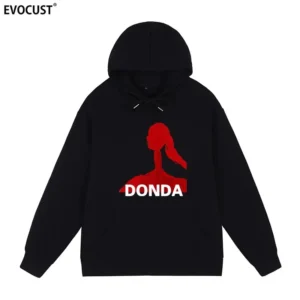Motion graphics animation continues to evolve, pushing the boundaries of creativity and technological innovation. Businesses across various industries increasingly rely on motion graphics to engage their audiences, convey complex messages, and enhance their brand presence. From advertising to education, motion graphics is now an essential tool for effective communication.
With the rapid pace of technological advancement, staying updated on the latest trends in motion graphics animation is crucial for anyone in the field. In this blog, we’ll explore the latest trends shaping the future of motion graphics and how motion graphics animation services are evolving to meet the demands of modern audiences.
1. 3D Animation: A Leap Beyond Flat Designs
While 2D animation remains popular for its simplicity and charm, 3D animation is making significant strides in the motion graphics world. The depth, realism, and immersion that 3D animation offers are unmatched, making it ideal for industries like gaming, virtual reality, and advertising.
The use of 3D in motion graphics is becoming more accessible, thanks to advancements in software and hardware. Companies offering graphics animation services are incorporating 3D elements to create more dynamic visuals that captivate audiences. Whether it’s for product animations, architectural visualizations, or explainer videos, 3D graphics add a layer of sophistication that sets brands apart.
Key Insight:
The growing demand for 3D animation is driven by its ability to enhance realism. As VR and AR technologies become more mainstream, we can expect to see even more 3D animations integrated into digital experiences.
2. Minimalist Design: Less Is More
One of the most noticeable trends in motion graphics is the shift toward minimalism. This design approach focuses on clean, simple visuals with limited color palettes, and it has gained popularity due to its ability to communicate messages clearly without overwhelming the audience.
Minimalist motion graphics are ideal for explainer videos, logo animations, and social media content, where the goal is to convey a message efficiently. Motion graphics animations that specialize in minimalist designs often emphasize sleek typography, smooth transitions, and subtle movements to keep viewers engaged.
Key Insight:
Minimalism works well for brands that value clarity and elegance. It allows for a more focused presentation, ensuring that key messages stand out without being buried under complex visuals.
3. Kinetic Typography: Words in Motion
Typography has always played a critical role in design, but kinetic typography is taking it to the next level in motion graphics. This trend involves animating text in creative ways to add energy and emphasis to words, making them an integral part of the storytelling process.
From bouncing, rotating, or expanding text to dynamic transitions between words, kinetic typography captures attention and drives the narrative. Motion graphics animation services are now increasingly employing kinetic typography in commercials, movie trailers, and promotional videos to add visual flair to the messaging.
Key Insight:
Kinetic typography is highly effective for conveying emotions and emphasizing specific points. It turns static text into an engaging visual experience, keeping audiences captivated while delivering the intended message.
4. Motion Graphics for Augmented and Virtual Reality (AR/VR)
The rise of AR and VR technology is opening new avenues for motion graphics animation. These technologies are transforming the way audiences interact with digital content, providing immersive and interactive experiences. Motion graphics play a crucial role in shaping these experiences, from enhancing gaming environments to creating virtual tours for brands.
Motion graphics are adapting to create content specifically for AR and VR platforms, where traditional flat designs won’t suffice. In AR, motion graphics are used to overlay information or visuals on the physical world, while in VR, they help build entirely new virtual environments. As AR and VR technologies become more widespread, the need for motion graphics that seamlessly blend into these experiences will continue to grow.
Key Insight:
AR and VR are rapidly growing fields, and motion graphics will be essential in providing engaging and interactive content within these platforms. Brands that invest in AR and VR experiences are likely to see higher engagement rates as these technologies gain traction.
5. Liquid Motion: Smooth and Fluid Transitions
Fluid motion is a major trend in motion graphics today. Known as liquid motion, this style uses smooth, organic transitions that flow like liquid, giving the animation a more natural and seamless appearance. Liquid motion is particularly effective in logo animations, explainer videos, and transitions between scenes.
The hypnotic and visually pleasing nature of liquid motion keeps viewers engaged, making it ideal for brands looking to create dynamic and fluid visual experiences. Motion graphics animation services that incorporate liquid motion often pair it with vibrant color schemes and playful design elements to enhance the viewer’s experience.
Key Insight:
Liquid motion creates a sense of continuity and flow, making it perfect for maintaining audience attention. Brands looking to create fluid, eye-catching visuals are increasingly turning to this technique to make their content more appealing.
6. Animated Icons and Micro-Interactions
Animated icons and micro-interactions are becoming increasingly popular in web design, mobile apps, and user interfaces. These small, subtle animations improve user experience by providing feedback, guiding users, and making digital interactions more enjoyable. Animated icons, such as loading spinners, buttons, and notifications, are an excellent way to add personality to websites and apps.
They are embracing this trend by creating custom animations that fit seamlessly into a brand’s digital platform. These small details might seem insignificant, but they play a huge role in enhancing user engagement and interaction.
Key Insight:
Animated icons and micro-interactions are essential for modern digital experiences. They make interfaces feel more intuitive and responsive, contributing to a positive user experience.
7. Bold Colors and Gradients: A Vibrant Comeback
In the world of motion graphics, bold colors and gradients are making a comeback. Designers are using vibrant, eye-catching color schemes to add energy and personality to animations. Gradients, in particular, are used to create depth and dimension in visuals, moving away from flat design trends.
Motion graphics services are utilizing these bold color palettes to help brands stand out in a crowded digital landscape. The right combination of bold colors and smooth transitions can evoke emotions, draw attention, and leave a lasting impression on viewers.
Key Insight:
Bold colors and gradients provide an exciting way for brands to differentiate themselves visually. This trend is especially effective for consumer brands that want to convey energy, enthusiasm, and innovation.
8. AI-Driven Motion Graphics
Artificial intelligence (AI) is making its way into the world of motion graphics, enabling designers to create animations more efficiently. AI tools can automate certain aspects of the animation process, such as creating realistic character movements or generating transitions, allowing designers to focus on the more creative aspects of the project.
For motion graphics animation services, AI tools are a game-changer, reducing the time and effort required to produce high-quality animations. AI also makes it easier to scale motion graphics production, which is particularly beneficial for agencies handling multiple clients.
Key Insight:
AI-driven motion graphics are streamlining the animation process, enabling designers to create more complex visuals in less time. This trend is set to revolutionize the industry by making motion graphics more accessible and efficient.
Final Thoughts
The world of motion graphics is constantly evolving, with new trends emerging that push the boundaries of creativity and technology. From the growing use of 3D animation to the rise of AR and VR, motion graphics animation services are adapting to meet the changing needs of brands and audiences alike. By staying on top of these trends, businesses can create more engaging, memorable, and impactful visual experiences that resonate with their target audience.
As motion graphics continues to play a pivotal role in digital communication, companies that embrace these trends will be better positioned to capture audience attention and drive meaningful engagement.
Also read : What Everyone Should Know About Web Scraping Services



